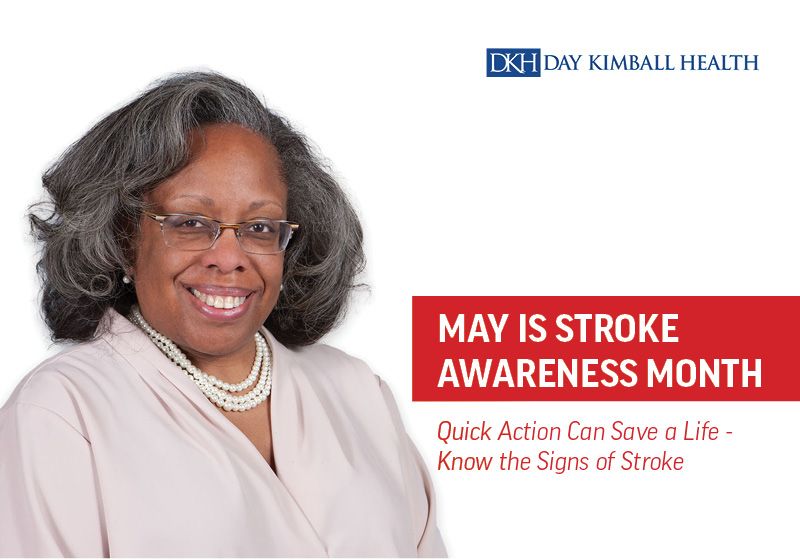
Quick Action Can Save a Life—Know the Signs of Stroke
05/21/2025Authored by Dr. Vanessa Brown, Chief Medical Officer
Day Kimball Health
May is Stroke Awareness Month—a reminder that recognizing the signs of a stroke and acting quickly can save lives. Stroke is one of the leading causes of serious long-term disability, but with prompt treatment, many outcomes can be improved or even reversed.
The easiest way to remember the warning signs is with the acronym BE FAST:
- B – Balance: Sudden loss of balance or coordination
- E – Eyes: Sudden change in vision, such as blurred or double vision
- F – Face: Sudden drooping or uneven smile
- A – Arms: Weakness or numbness in one arm
- S – Speech: Slurred or hard-to-understand speech
- T – Time: Time is critical. Call 911 immediately
Calling 911 activates emergency stroke protocols so care can begin before the patient arrives at the hospital. This improves treatment times and outcomes compared to arriving by car.
Don’t Wait—Every Second Counts
Many people delay care, hoping symptoms will pass. But stroke symptoms—such as confusion, slurred speech, weakness, or vision changes—should never be ignored. Even if the cause turns out to be something else, like low blood sugar, the risk is too great to wait and see.
Strokes occur in two main forms. Ischemic strokes, the most common type, are caused by blocked blood flow to the brain. Hemorrhagic strokes involve bleeding in the brain, usually from high blood pressure. These conditions require very different treatments, which is why it’s important not to take medications like aspirin before being evaluated.
Prevention Begins with You
Several manageable conditions increase stroke risk: high blood pressure, diabetes, high cholesterol, smoking, excessive alcohol use, and atrial fibrillation (AFib). Keeping these under control with the help of your primary care provider is one of the best ways to reduce your risk.
Although strokes are more common in people over 65, they can happen at any age—even in children. Symptoms should always be taken seriously, regardless of age.
Family members and friends often notice the signs first. If someone suddenly seems confused, is slurring their words, or has weakness on one side, don’t wait—call 911.
Remember the BE FAST acronym. Call 911. Minutes matter.
For more information, visit daykimball.org or talk with your healthcare provider.

